#pre raphaelism
Text

A Woodland Nymph by Philip Hermogenes Calderon (1883)
#philip hermogenes calderon#art#paintings#fine art#19th century#19th century art#romanticism#pre raphaelite#pre raphaelism#painting#british art#british artist#mythology#greek mythology#wood nymph#dryad#classic art
4K notes
·
View notes
Text
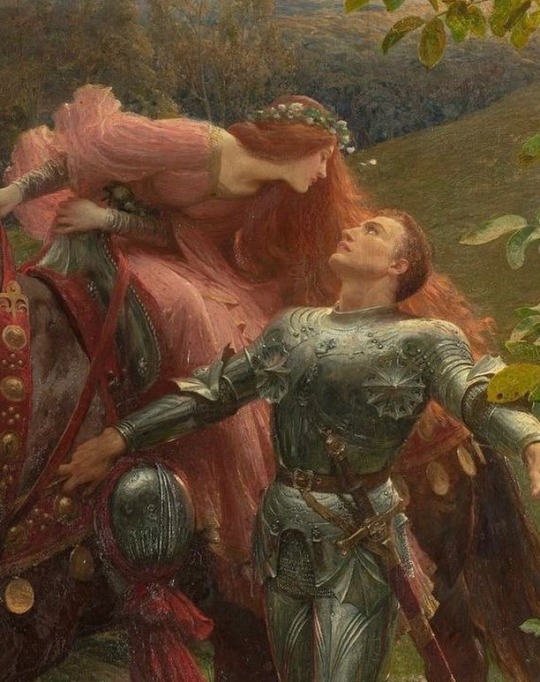
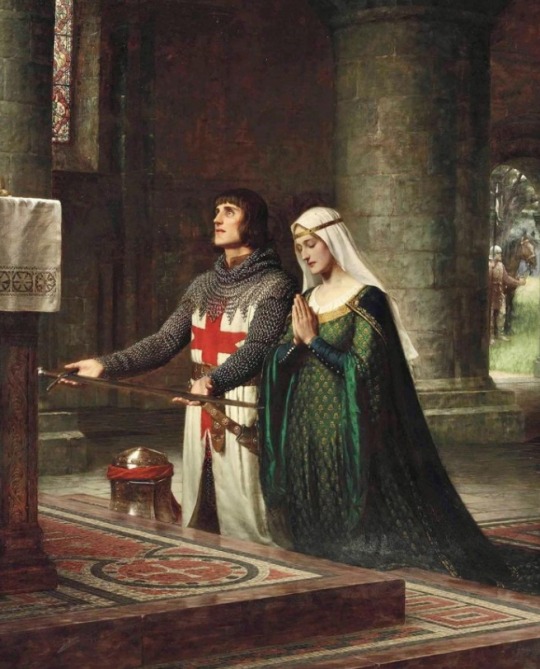




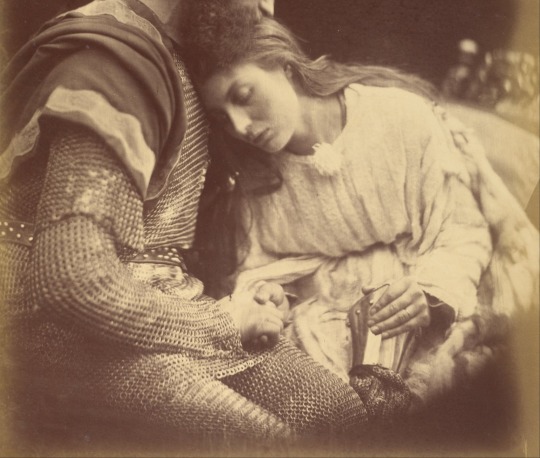
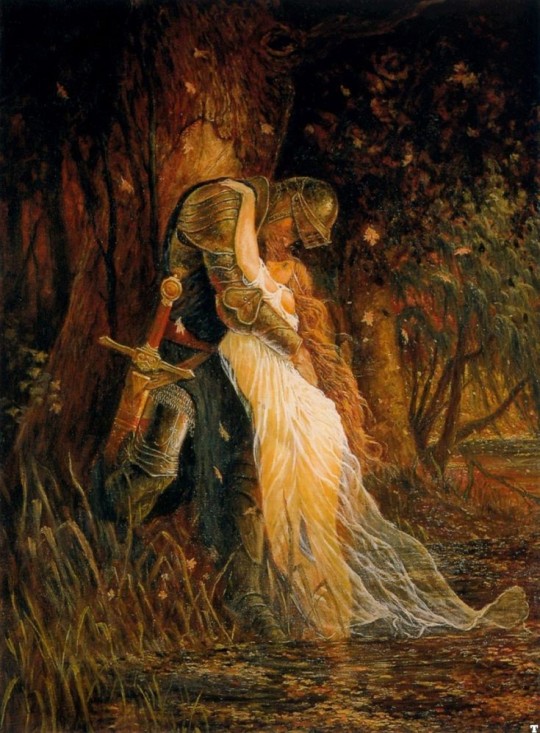
Love between knights and women in pre-raphaelism.
@danilades.artist on insta - your support means the world to me.
#love#romanticism#art#art post#pre raphaelite#pre raphaelism#john william waterhouse#preraffaelismo#preraffaelliti#knight core#medieval fantasy#arte
4K notes
·
View notes
Text
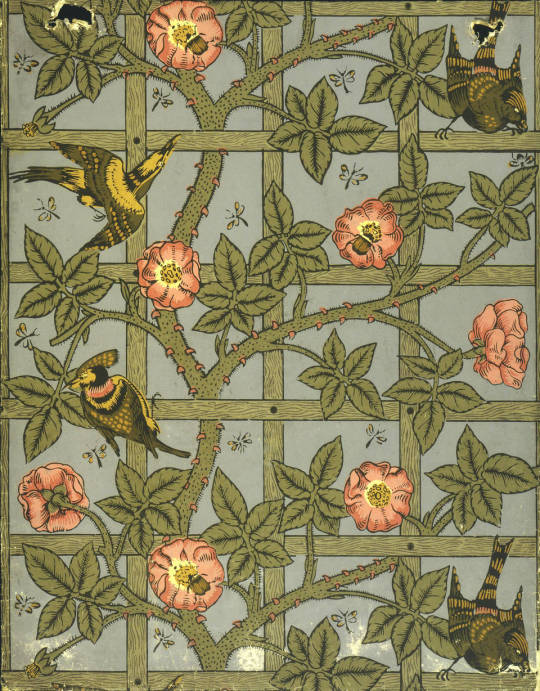




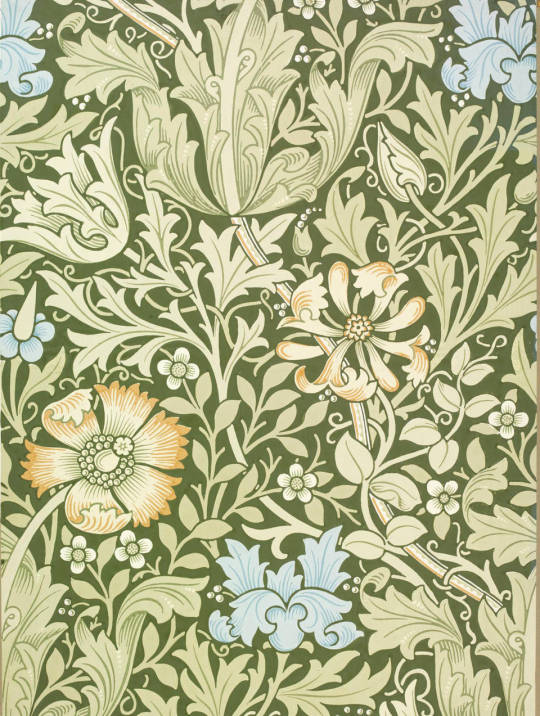
Wallpapers by William Morris
7K notes
·
View notes
Text

Early Poems of William Morris
1914
Artist : Florence Harrison
#early poems#william morris#1914#florence harrison#pre raphaelism#pre raphaelite#arthurian mythology#arthurian legend#arthurian literature#arthurian lore
8K notes
·
View notes
Text

John William Waterhouse (1849-1917)
"Jason and Medea" (1907)
Oil on canvas
Pre-Raphaelite
Currently in a private collection
#paintings#art#artwork#mythological painting#greek mythology#john william waterhouse#oil on canvas#fine art#pre raphaelite#pre raphaelism#private collection#english artist#british artist#jason and medea#medea#costume#costumes#couple#early 1900s#early 20th century#revenge
806 notes
·
View notes
Photo


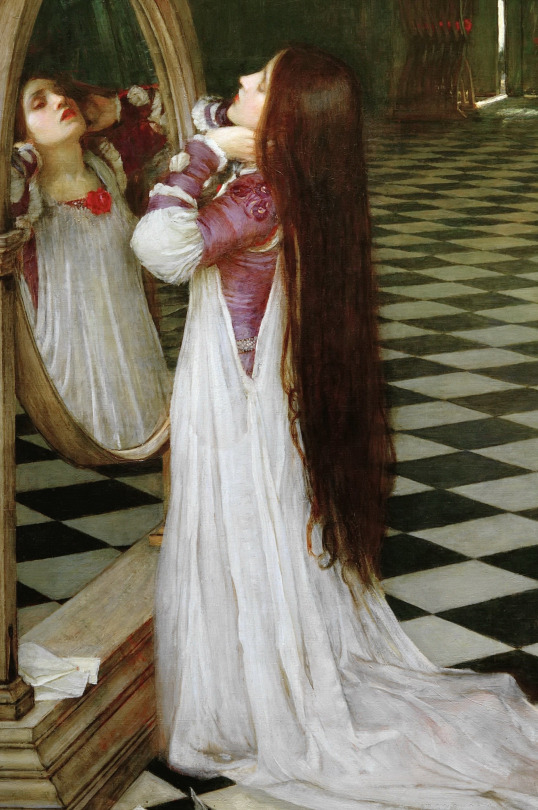
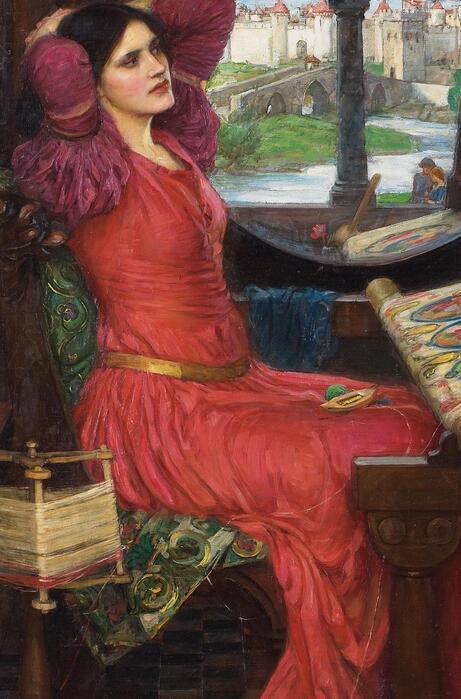
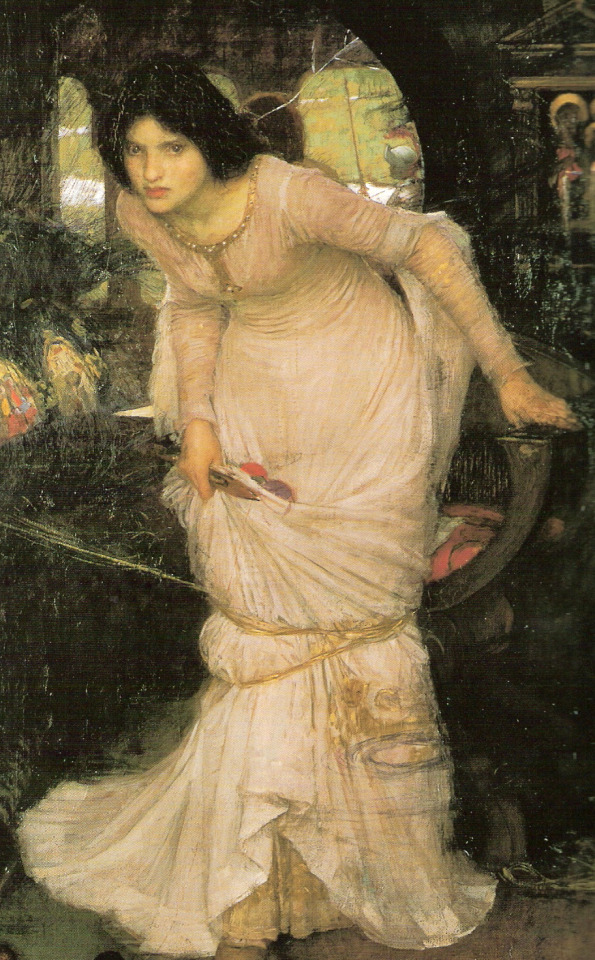
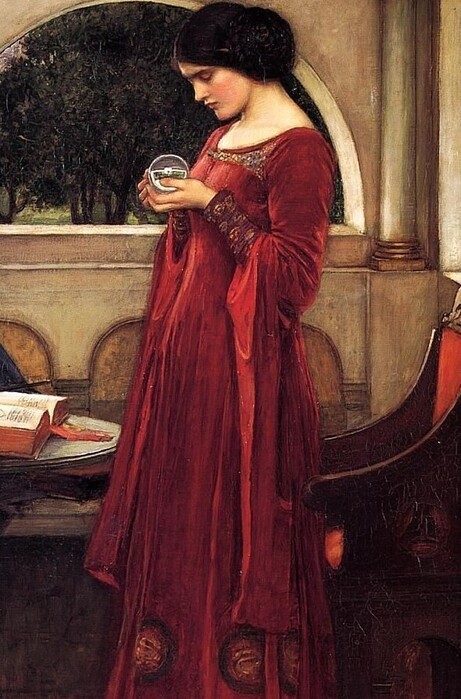
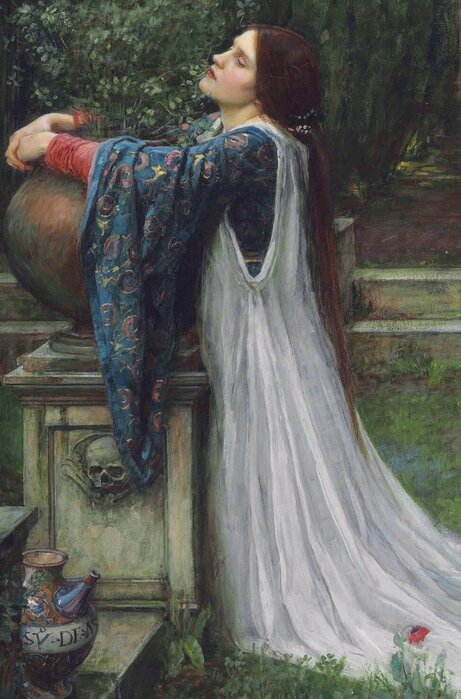
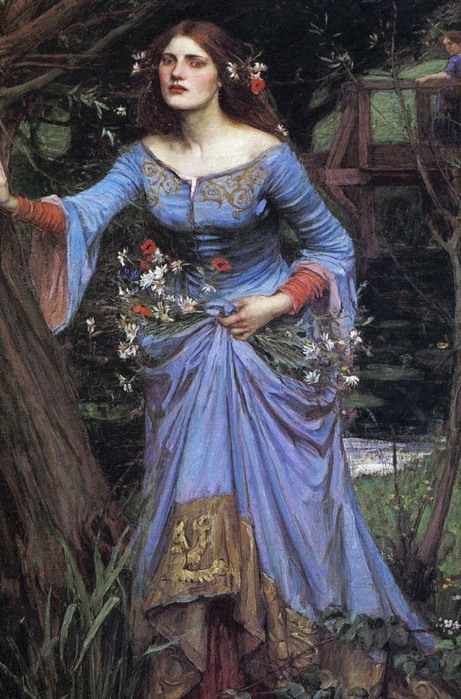
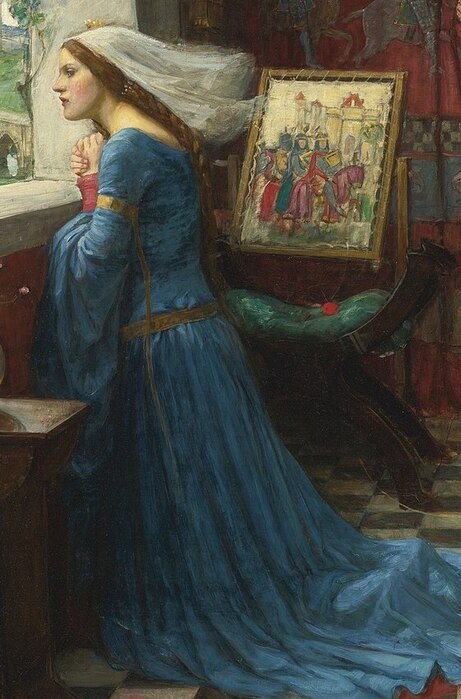
John William Waterhouse + medieval and renaissance costumes
#john william waterhouse#art compilation#pre raphaelite#19th century#art#art history#artedit#artblr#the lady of shalott#ophelia#pre raphaelism#pre-raphaelite#painting#19th century art#costumes#classical art#hulderposts#faves#my posts#renaissance#medieval#maiden#beauty#light academia#classic art#looks
10K notes
·
View notes
Text
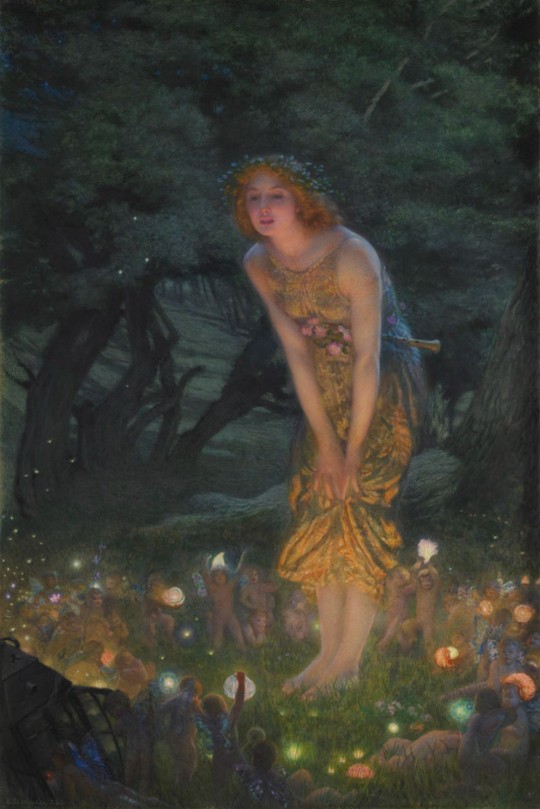
Edward Robert Hughes, Midsummer Eve (1908)
#it's that time of year#painting#art#artwork#art academia#watercolour#cottagecore#summer#pre raphaelism#fairycore#fairytale#midsummer#warmcore#romanticism#nature aesthetic#naturecore#green academia#summer solstice#watercolor#romantic academia#doing the traditional dates instead of scientific because i feel like it#my posts
1K notes
·
View notes
Text
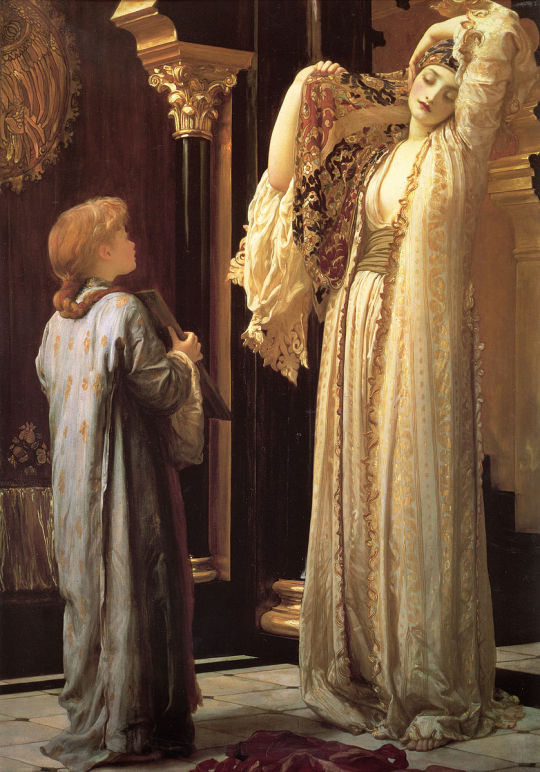
Frederic Leighton (British, 1830–1896) • Light of the Harem • c. 1880 • Private collection
#art#painting#fine art#art history#19th century art#british artist#british painter#historical painting#historical art#frederic leighton#academic art#academic painting#children in paintings#women in paintings#beautiful dresses in paintings#pre raphaelism#pre raphaelite
772 notes
·
View notes
Text
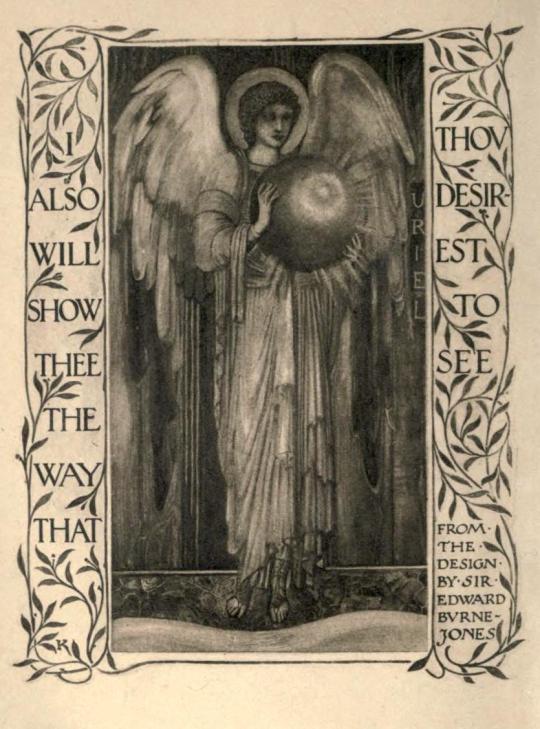
"I also will show thee the way that thou desirest to see."
Illustration of the Archangel Uriel, based on a design by Sir Edward Burne Jones (English, 1833–1898)
Archibald Duff (ed.), The First and Second Books of Edras (London: J. M. Dent, 1903)
684 notes
·
View notes
Text

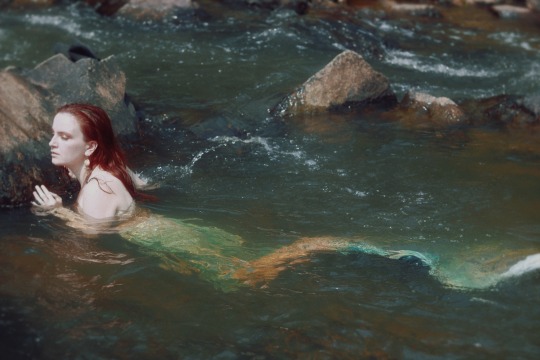
mermaid ophelia 🪷
#mermaid#mermaids#FinFolk#fabric tail#ophelia#william shakespere#shakespeare#hamlet#ophelia hamlet#pre raphaelism#pre raphaelite#painting#oil painting#mermaids of tumblr#photoshoot#freshwater mermaid#mermaid aesthetic
672 notes
·
View notes
Text


Photo courtesy Society of Antiquaries of London - Kelmscott Manor
254 notes
·
View notes
Text
The Secret Language of a Page of Chivalry: The Pre-Raphaelite Connection
Adapting Neil Gaiman’s Chivalry is a decades-long dream fulfilled. The story as text can be enjoyed on multiple levels, and so can the art. You look at the pages and see the pretty pictures, but the pictures also have meta-textual meaning. Knowing this secret language adds to the experience.
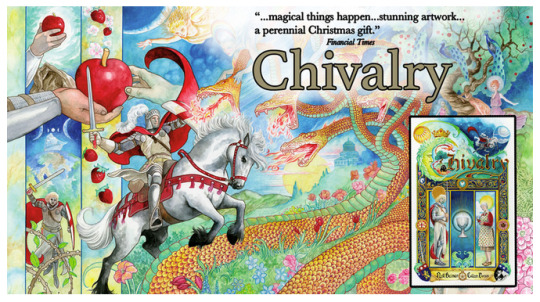
Some people pick up the references quickly, but I’ll share with you some more of what’s going on under the surface.
In Ye Olden Days of Art Making, most painters made pictures that contained visual narrative cues. Flowers in a picture might be heraldic signs that signaled political affiliations, or could indicate purity, anger, or love. Purple was the color of kings. A dog in a picture might represent faithfulness, and butterflies could represent the soul.
There are Pre-Raphaelite paintings with so many symbols and ideas in them that you need a deep working knowledge of Victorian and Edwardian social mores to understand what’s going on.
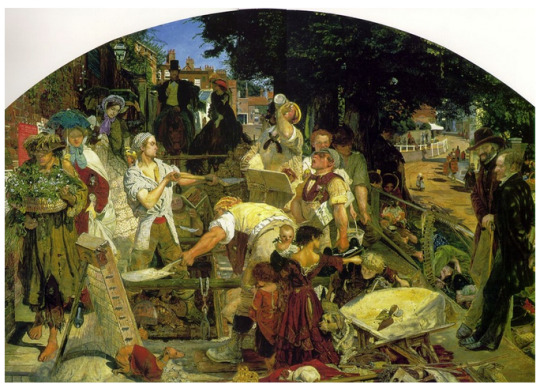
For example, Ford Madox Brown’s Work, a painting which took some 13 years to complete, was first exhibited in 1865 with a catalogue explaining all its symbols and elements. There is nothing in that picture that doesn’t mean something.
I brought some of that visual meta-textual sensibility to Chivalry, (and I’ve written about the symbolism and meanings in the work in other essays.)
I also brought into the work direct Pre-Raphaelite art references.

From 1868-1870, Sir Edward Coley Burne-Jones created four paintings illuminating the tale of Pygmalion and Galatea, entitled Pygmalion and the Image, and wrote a poem with each line titling one painting:
The heart desires
The hand refrains
The godhead fires
The soul attains.
A perfect little poem for Chivalry, and I think of it often when some people present me with what I think is a very strange question: why didn’t Galaad just take the Holy Grail from Mrs. Whitaker?
It kind of breaks my heart that people would even ask that.
Burne-Jones painted two versions of this series of which this is the second.

In the first panel of this page, Sir Galaad kneeling before the Grail is derived from the figure of Pygmalion kneeling before Galatea: The Soul Attains.

Sir Galaad’s restraint even in the face of his greatest desire makes him worthy of his prize.

There are two Pre-Raphalite references in this page, the most obvious being in panel 2: it’s Sir John Everett Millais’s 1857 work A Dream of the Past: Sir Isumbras at the Ford.

The painting was very poorly received on first exhibition, compelling Millais to redo significant portions of it. It was caricatured and ridiculed, and then ended up becoming influential and popular, and isn’t that the way it goes.
That’s an art career in a nutshell, really.
The Sir Isumbras image also influenced John Tenniel’s illustrations for the Lewis Carroll Alice in Wonderland novels.
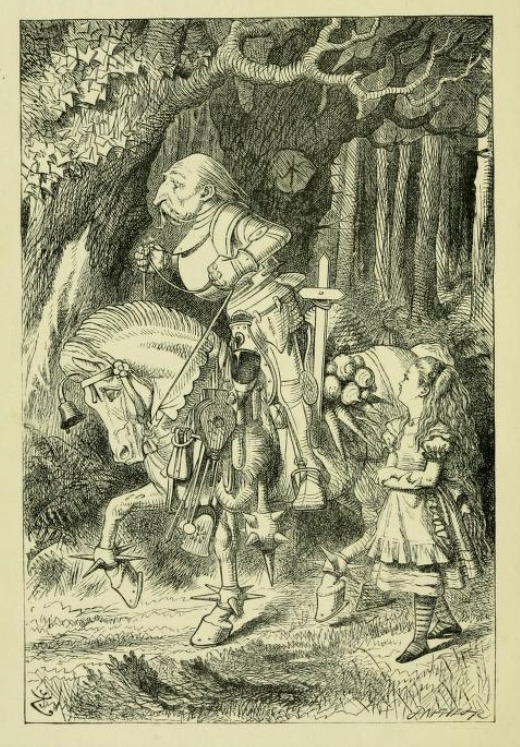
Sir Isumbras derives from a 13th century Medieval romance poem about a good knight whose pride causes him to fail in his Christian duty. He is presented with a series of difficult challenges before he can find happiness again, reunite with his family, and be forgiven his sins. The painting by Millais is based less explicitly on the poem than it is on a later parody of the poem. (It’s complicated.)
My using Sir Isumbras as the base for the shot of Galaad with the children is obvious here. In the Millais painting, Sir Isumbras carries a woodcutter’s children across the ford. In Chivalry, Sir Galaad carries the children of Mrs. Whitaker’s neighborhood down the street.
While Sir Isumbras spent many years learning humility and Christian duty, Galaad has a long quest to fulfill before he can achieve his goal. And on the way to that goal, he’s humble and nice to children, too.
That the Millais painting was such a huge influence on many a depiction of knighthood over the years made it a perfect reference point here, and the story behind both the painting and the poem give it further layers of meaning.
The next panel has a far less obvious reference, but the source is Arthur Hughes’s painting The Rescue.
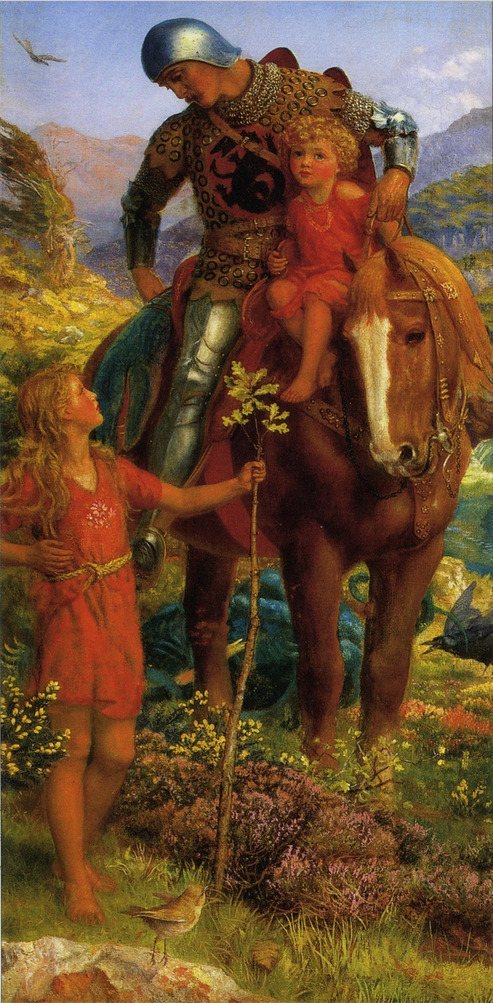
Arthur Hughes is one of the lesser-known Pre-Raphaelites, but his art is widely seen and influential. He’s certainly been a big influence on me, as many of his paintings appear again and again in Arthuriana references, as he was a prolific King Arthur picture tale teller.
The Rescue (1907-1908) was originally part of a diptych which was separated and sold back in the 1920’s. His style was becoming unpopular by the time Hughes painted the work, and little is known about this work except that one panel was in the collection of Andrew Lloyd Webber at some point. Maybe still is. Dunno.

Anyway, the diptych depicts a little child kneeling in prayer menaced by a dragon in one panel, and in the next, safely trotting away with a knight on horseback. I like that this is a diptych, a kind of proto-comic art form common in medieval religious art, so this was perfect to use here.
Another reference to Arthur Hughes is in this double page splash from later in the book as Galaad on his quest encounters the Hesperides.

I didn’t set out to reference this Arthur Hughes piece at first, but it’s one of my favorite paintings. When I realized my sketches for this scene kept echoing the Hughes composition, I went with it. The Hughes painting of Galahad is one of the most famous depictions of the character, so it makes me happy to have this referenced in Chivalry.

Kindly ask for CHIVALRY, published by Dark Horse Comics in the USA and by Headline Books in the UK at your local comic shops or bookstore. Written by Neil Gaiman. Adaptation and art by me.
For further reading on this project, go HERE.
HERE.
And HERE.
Thank you to my Patreon patrons for sponsoring my work and this post.
Colleen Doran Illustrates Neil Gaiman will be a solo exhibit at the Society of Illustrators in New York City this spring. Watch this space for updates.
Have a wonderful holiday season.
#neil gaiman#dark horse comics#king arthur#Sir Galahad#Comics#graphic novel#fantasy graphic novel#watercolor#pre raphaelite#pre raphaelism
2K notes
·
View notes
Text

Pandora by John William Waterhouse
#pandora's box#art#john william waterhouse#pre raphaelite#pre raphaelism#pandora#box#woman#greek mythology#evil#evils#world#chest#humans#curiosity#divine#antiquity#ancient greek#ancient greece#europe#european#history#classical#mythology#mythological
997 notes
·
View notes
Text
John William Waterhouse - Gather Ye Rosebuds While Ye May

#traditional art#classic art#traditional painting#art history#art detail#classical art#19th century art#art#oil painting#art details#oil on canvas#canvas art#canvas painting#painting#painter#john william waterhouse#pre raphaelism#pre raphaelite#arte#1800s art#british art#contemporary art#fine art#artwork
178 notes
·
View notes
Text

Night and her Daughter Sleep
1902
Artist : Mary Lizzie Macomber (1861-1916)
#mary l. macomber#mary macomber#american artist#american art#night#sleep#daughter#1902#allegory#allegorie#allegorical art#female artists#art#nuit#sommeil#mary lizzie macomber#dark#aesthetic#mystical#magic#pre raphaelism#pre raphaelite#classic art#ténèbres#star#stars#étoiles#noir#black sky#night sky
229 notes
·
View notes
Text

Frederick Sandys (1829-1904)
"Love's Shadow" (1867)
Oil on panel
Pre-Raphaelite
The painting's sitter is actress Mary Emma Jones, Sandys' common-law wife. She is biting the blooms of blue violets, which are a symbol of love and devotion in Victorian floriography
#paintings#art#artwork#genre painting#female portrait#frederick sandys#oil on panel#oil on wood panel#fine art#pre raphaelite#pre raphaelism#english artist#british artist#portrait of a woman#side profile#history#red hair#flowers#flower language#1860s#mid 1800s#mid 19th century#1k#2k
2K notes
·
View notes